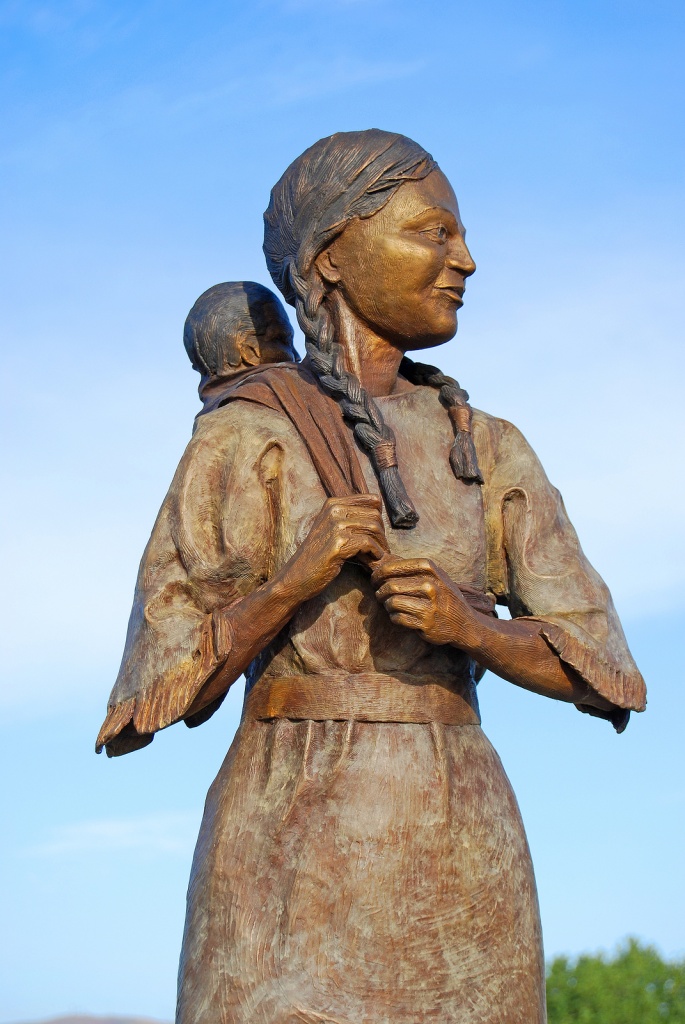Sacagawea played a huge role in the Lewis and Clark expedition for a few different reasons. The Corp of Discovery first arrived at her tribe site in 1804. It actually was her husband who was hired to help with the expedition, but since she could speak to two different types of Native Americans, the Hidatsa and Shoshone, plus speak French with her husband, she was really the most valuable.
Lewis and Clark knew that they were going to need horses from the Shoshone to help cross over the Bitterroot Mountains, so having Sacagawea to help with the translating was going to be of a great benefit. Little did they know just how much of a contribution she was really going to make.
Before leaving in the spring of 1805, Sacagawea gave birth to her first son. He was carried on her back the whole way from North Dakota to the Pacific coast and back. He is affectionately known as the world’s youngest explorer. She was the only woman on the expedition of 33 people, and her role was just as important as anyone’s.
At one point in their journey, a boat that she was riding in nearly flipped over, and it was Sacagawea that saved a bunch of important items and paperwork. The captains later decided to name that river after her since she had done such an important act.
When they arrived at the Shoshone tribe, it was to everyone’s surprise that it was actually Sacagawea’s brother that was the Chief. They hadn’t seen each other in over five years. It was a very rewarding and emotional reunion for all that were involved. The Corp was able to purchase all of the necessary horses and items that they needed.
Continuing on with their travels, Sacagawea had an incredible ability to track, and she had keen instincts about the land. As The Corp came upon other tribes, seeing a bunch of white men coming into their tribes would immediately put the Native Americans on the defensive. Fortunately, having a woman and baby with them made the tribes see that they were not there for a fight.
Once they actually made it to the Pacific, Sacagawea pleaded for Lewis and Clark to let her go with a few of the men to go see a whale that was washed up on the beach. Since she had played such a big role in their journey to the ocean, they decided to let her go with them.
On the way back, Sacagawea managed to remember trails from her childhood and used her skills as an amazing tracker to actually lead Lewis and Clark through shortcuts and easier traveling passages. One of these trails led to easy passing through the Montana Mountains and led to the discovery of Yellowstone River.
Though she helped lead part of the expedition and played such an important role in negotiations with the Native Americans, Sacagawea received no money or compensation. However, her husband received 320 acres of land and $500.33. That is just the way it was back then, unreasonable and unfair, since she was a Native American and a woman. She didn’t really have any chance of being shown much credit.
Thanks to the writings of Lewis and Clark though, we can see how much she really did do and give her the credit she deserves today. There are monuments and writings to always remind people of what a big role she had in their expedition. The name Sacagawea will always be remembered as an important part of the Lewis and Clark expedition.


hi… when i read the beginning i thought it was okay.. i think you should add a little sizzle at the beginning to make your readers want to read more… just a little side note.
love,
your reader